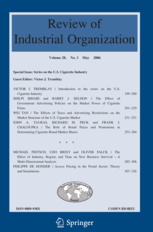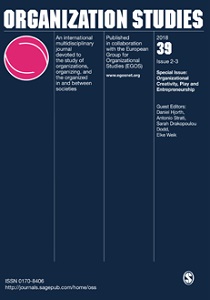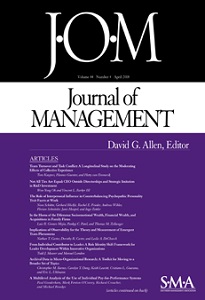Academic articles
Practitioner articles
Working papers
Books
Book chapters
Case studies
Other publications
Subject(s)
Diversity and inclusion; Health and environment; Technology, R&D management
Keyword(s)
Crowd science, citizen science, crowdsourcing, problem solving, problem finding, agenda setting, organization of science
Scientists are increasingly crossing the boundaries of the professional system by involving the general public (the crowd) directly in their research. However, this crowd involvement tends to be confined to empirical work and it is not clear whether and how crowds can also be involved in conceptual stages such as formulating the questions that research is trying to address. Drawing on five different “paradigms” of crowdsourcing and related mechanisms, we first discuss potential merits of involving crowds in the formulation of research questions (RQs). We then analyze data from two crowdsourcing projects in the medical sciences to describe key features of RQs generated by crowd members and compare the quality of crowd contributions to that of RQs generated in the conventional scientific process. We find that the majority of crowd contributions are problem restatements that can be useful to assess problem importance but provide little guidance regarding potential causes or solutions. At the same time, crowd-generated research questions frequently cross disciplinary boundaries by combining elements from different fields within and especially outside medicine. Using evaluations by professional scientists, we find that the average crowd contribution has lower novelty and potential scientific impact than professional research questions, but comparable practical impact. Crowd contributions outperform professional RQs once we apply selection mechanisms at the level of individual contributors or across contributors. Our findings advance research on crowd and citizen science, crowdsourcing and distributed knowledge production, as well as the organization of science. We also inform ongoing policy debates around the involvement of citizens in research in general, and agenda setting in particular.
With permission of Elsevier
Volume
51
Journal Pages
104491
Subject(s)
Management sciences, decision sciences and quantitative methods; Product and operations management
Keyword(s)
Product proliferation, lead-time reduction, process redesign, delayed differentiation
Product proliferation occurs in supply chains when manufacturers respond to diverse market needs by trying to produce a range of products from a limited variety of raw materials. In such a setting, manufacturers can establish market responsiveness and/or cost efficiency in alternative ways. Delaying the point of the proliferation helps manufacturers improve their responsiveness by postponing the ordering decisions of the final products until there is partial or full resolution of the demand uncertainty. This strategy can be implemented in two different ways: (1) redesigning the operations so that the point of proliferation is swapped with a downstream operation or (2) reducing the lead times. To establish cost efficiency, manufacturers can systematically reduce their operational costs or postpone the high-cost operations. We consider a multi-echelon and multi-product newsvendor problem with demand forecast evolution to analyze the value of each operational lever of the responsiveness and the efficiency. We use a generalized forecast-evolution model to characterize the demand-updating process, and develop a dynamic optimization model to determine the optimal order quantities at different echelons. Using anonymized data of Kordsa Inc., a global manufacturer of advanced composites and reinforcement materials, we show that our model outperforms a theoretical benchmark of the repetitive newsvendor model. We demonstrate that reducing the lead time of a downstream operation is more beneficial to manufacturers than reducing the lead time of an upstream operation by the same amount, whereas reducing the upstream operational costs is more favorable than reducing the downstream operational costs. We also indicate that delaying the proliferation may cause a loss of profit, even if it can be achieved with no additional costs. Finally, a decision typology is developed, which shows effective operational strategies depending on product/market characteristics and process flexibility.
Volume
31
Journal Pages
1135–1156
Subject(s)
Economics, politics and business environment
Keyword(s)
Reverse privatization, solid waste collection, mixed oligopoly, state-owned enterprises, competition law enforcement, logit regression
JEL Code(s)
L33, L44, L88, H44, K21
After earlier waves of privatization, local governments have increasingly taken back control of local service provisions in some sectors and countries and instead started providing those services themselves (reverse privatization). Using a unique panel dataset on the mode of service provision for solid waste collection for German municipalities that cover the years 2003, 2009, and 2015, we investigate the motives for reverse privatization. Our results show that -- in deciding whether to insource or not -- municipalities react to the cost advantages of private suppliers as well as to the competitive environment and municipal activity: There is more switching to insourcing in concentrated markets and in markets with horizontally or vertically related public services. Local interest groups influence this decision as well.
© 2022 Springer
Journal Pages
217–261
Subject(s)
Economics, politics and business environment
Keyword(s)
sales channels, digital markets, price competition, consumer information
JEL Code(s)
D43, D83, L11, M3
We study strategic interactions in markets where firms sell to consumers both directly and via a competitive channel (CC), such as a price comparison website or marketplace, where multiple sellers’ offers are visible at once. We ask how a CC’s size influences market outcomes. A bigger CC means more consumers compare prices, increasing within-channel competition. However, such seemingly pro-competitive developments can raise prices and reduce consumer surplus by weakening between-channel competition. We also use the model to study relevant active policy issues including price clauses, integrated ownership structures, and access to consumers’ purchase data.
© 2021, © The Author(s) 2021. Published by Oxford University Press on behalf of The Royal Economic Society.
Volume
132
Journal Pages
741–766
Subject(s)
Human resources management/organizational behavior; Technology, R&D management
Keyword(s)
Citizen science, crowd science, human-machine integration, open innovation in science
Research projects that actively involve ‘crowds’ or non-professional ‘citizen scientists’ are attracting growing attention. Such projects promise to increase scientific productivity while also connecting science with the general public. We make three contributions. First, we argue that the largely separate literatures on ‘Crowd Science’ and ‘Citizen Science’ investigate strongly overlapping sets of projects but take different disciplinary lenses. Closer integration can enrich research on Crowd and Citizen Science (CS). Second, we propose a framework to profile projects with respect to four types of crowd contributions: activities, knowledge, resources, and decisions. This framework also accommodates machines and algorithms, which increasingly complement or replace professional and non-professional researchers as a third actor. Finally, we outline a research agenda anchored on important underlying organisational challenges of CS projects. This agenda can advance our understanding of Crowd and Citizen Science, yield practical recommendations for project design, and contribute to the broader organisational literature.
Volume
29
Journal Pages
251–284
Subject(s)
Human resources management/organizational behavior
Keyword(s)
theory, philosophy of science, open science
Volume
45
ISSN (Online)
1469-1825
ISSN (Print)
0140-525X
Subject(s)
Economics, politics and business environment; Finance, accounting and corporate governance
Keyword(s)
Banking crises, cleansing effect, productivity growth, supervisory forbearence
We assess the cleansing effects of the 2008–2009 financial crisis. U.S. regions with higher levels of supervisory forbearance on distressed banks see less restructuring in the real sector: fewer establishments, firms, and jobs are lost when more distressed banks remain in business. In these regions, the banking sector has been less healthy for several years after the crisis. Regions with less forbearance experience higher productivity growth after the crisis with more firm entries, job creation, and employment, wages, patents, and output growth. Forbearance is greater for state-chartered banks and in regions with weaker banking competition and more independent banks.
© 2022 Western Economic Association International.
ISSN (Online)
1465-7295
Subject(s)
Human resources management/organizational behavior; Management sciences, decision sciences and quantitative methods; Strategy and general management
Keyword(s)
Sociology, status, cognate concepts
Status constitutes a core research concept across the social sciences. However, its definition is still contested, and questions persist about its consequences. We begin with a flexible, provisional definition: status is a relational asset possessed by social actors insofar as they are highly regarded by highly-regarded others. Using this definition as a backdrop, we develop a fourfold typology based on how status is used as an asset and from where it is derived. The typology allows us to explore the implications of considering status as either a quality-signal or a good, and of viewing status-conferring ties as either deference-based or dominance-based. We then consider the implications of our framework for the generation of novelty. Although status has been connected to many social and economic outcomes, because of competing predictions in the literature—the generation of novelty has been linked to all regions of the status distribution—we sketch intuitions for future research on the status-novelty linkage. We also work toward greater conceptual clarity by comparing and contrasting status with selected related concepts: quality, reputation, and legitimacy. We conclude with considerations of future research, including cautionary remarks regarding network-analytic measurement in light of the definition we propose.
Copyright © 2022 Matthew S. Bothner, Frédéric Godart, Noah Askin and Wonjae Lee
Volume
77
Journal Pages
111–136
ISSN (Online)
978-1-78756-591-3
ISSN (Print)
978-1-78756-592-0
Subject(s)
Human resources management/organizational behavior; Strategy and general management
Keyword(s)
Congress, ideology, influence, social capital, status
Prior research assumes that high-status actors have greater organizational influence than lower-status ones, that is, it is easier for the former to get their ideas and initiatives adopted by the organization than it is for the latter. Drawing from the literature on ideology, we posit that the status–influence link is contingent on actors’ ideological position. Specifically, status confers organizational influence to the degree that the focal actor is ideologically mainstream. The more an actor’s ideology deviates from the mainstream the less will her status translate into increased organizational influence. We find support for this hypothesis using data on the work of legislators in the House of Representatives in the United States Congress. By illuminating how and under what conditions status leads to increased influence, this study qualifies and extends current understandings of the role of status in organizations.
With permission of SAGE Publishing
Volume
43
Journal Pages
35–57
Subject(s)
Human resources management/organizational behavior
Keyword(s)
impasses, negotiations, agreements, conflict resolution, bargaining
Although impasses are frequently experienced by negotiators, are featured in newspaper articles, and are reflected in online searches, and can be costly, negotiation scholarship does not appear to consider them seriously as phenomenon worth explaining. A review of negotiation tasks to study impasses reveals that they bias negotiators towards agreement. We systematically organize past findings on impasses and integrate them in the impasse type, cause, and resolution model (ITCR model). Our fundamental assumption is that a positive bargaining zone does not imply symmetric preferences for an agreement. One or both negotiators may prefer an impasse over an agreement despite a positive bargaining zone. We argue that it is beneficial for management research to distinguish between three impasse types: if both negotiators perceive benefit from an impasse, they are wanted; if one negotiator perceives benefits from an impasse, they are forced; and if both do not perceive benefits from the impasse, they are unwanted. We review structural (e.g., bargaining zone, communication channels), interpersonal (e.g., tough tactics, emotions) and intrapersonal (e.g., biases, available information, and framing) factors as the likely antecedents of the three impasse types. We also examine evidence which suggests that wanted impasses can be resolved by changing the negotiation structure for both parties, forced impasses can be resolved through persuasion, and unwanted impasses can be overcome by debiasing both parties. Finally, we review current methodological guidance and provide updated recommendations on how scholars should deal with impasses in both study designs and data analyses.
With permission of SAGE Publishing
Volume
48
Journal Pages
49–76



